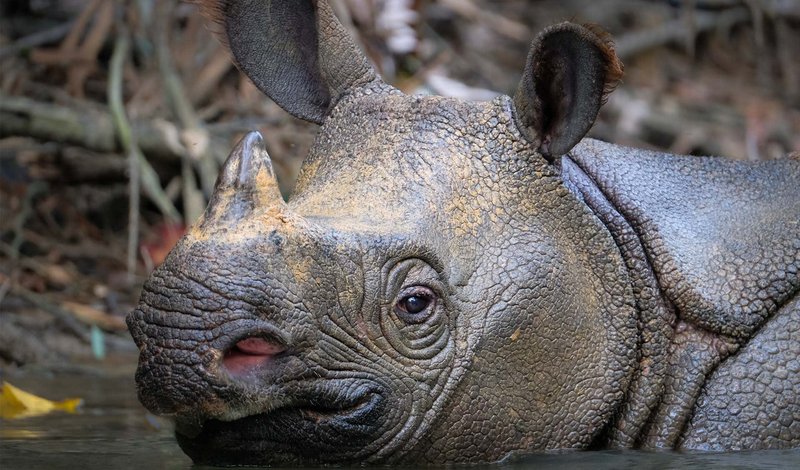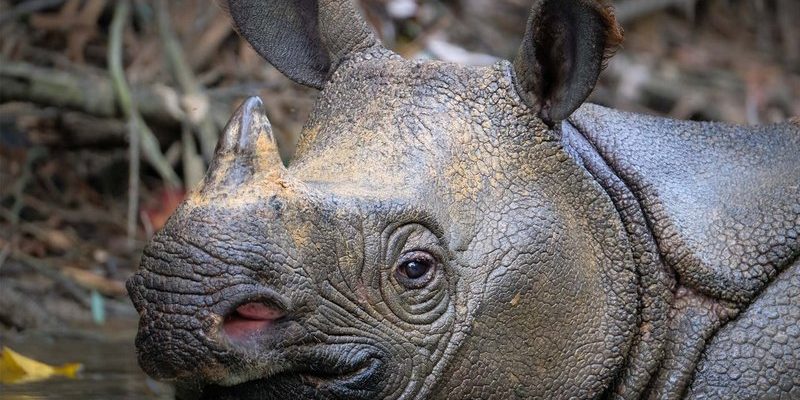
Throughout history, different cultures have crafted tales that feature the Javan rhinoceros, giving it roles that reflect human values, fears, and hopes. These stories range from ancient myths to contemporary representations in art and literature, showing how this elusive animal captivates the human imagination. Let’s dive into how this magnificent creature is portrayed in various cultures and how these narratives shape our understanding of it.
The Javan Rhino in Indonesian Folklore
In Indonesia, where the Javan rhinoceros primarily resides, the creature holds significant cultural weight. Traditional stories often depict the rhino as a guardian of the forest, symbolizing strength and protection. Local tribes share tales of the Javan rhino being a fierce protector of its habitat, which resonates with the community’s deep respect for nature.
One popular legend tells of a Javan rhino saving a village from a great flood. The rhino, with its powerful presence, created paths through the dense jungle, allowing villagers to escape rising waters. This story is not just about an animal’s strength but reflects the unity and strength of the community itself. Here’s the thing: by representing the rhino as a hero, local folklore emphasizes the intricate relationship between humans and nature.
Symbol of Strength and Resilience
Moreover, these tales often position the Javan rhinoceros as a symbol of resilience. In times of hardship, villagers look to the strength of the rhino as inspiration to persevere. You might find stories that exemplify how, much like the rhino navigating the dense forest, humans can overcome obstacles with determination and courage.
This connection to the Javan rhino highlights the importance of wildlife conservation. When people see these animals as symbols rather than mere creatures, it fosters a sense of responsibility to protect them. That’s why these stories matter; they encourage a cultural commitment to preserving not just the rhino, but the natural world.
The Javan Rhinoceros in Art and Literature
Art and literature throughout Southeast Asia often feature the Javan rhinoceros in various forms. From intricate batik designs to vibrant paintings, the rhino’s distinctive appearance inspires creativity. Artists use the rhino to symbolize various themes, including strength, wisdom, and the fragility of nature.
In literature, you might find the Javan rhinoceros appearing in children’s books, where it’s portrayed as a gentle giant that teaches lessons about kindness and environmental responsibility. Honestly, these stories are powerful because they reach younger audiences, planting seeds of awareness and empathy toward endangered species.
Modern Interpretations
Fast forward to the modern era, and the Javan rhino has also found its way into contemporary storytelling, including films and social media. Documentaries spotlight its struggles, creating a platform for advocacy while showcasing its beauty. Social media campaigns often feature powerful imagery of the rhino, helping to raise awareness about conservation efforts.
Through these modern representations, the Javan rhinoceros transcends its physical existence; it becomes a symbol of hope for conservation efforts worldwide. You might be wondering how this translates into action. Well, art and storytelling often inspire individuals to participate in wildlife protection initiatives, proving that narratives can lead to real-world changes.
The Javan Rhino in Myths of Other Cultures
Beyond Indonesia, the Javan rhinoceros appears in myths from other cultures as well. In some Southeast Asian cultures, rhinos are seen as spiritual beings that bridge the human world and the divine. Their enormous size often associates them with ancient warriors or deities, showcasing their power and importance in mythology.
Interestingly, similar parallels can be drawn between the Javan rhino and other creatures in folklore. For example, comparing it to the dragon in Chinese mythology, both are revered and feared for their immense power. These comparisons highlight how cultures across the globe attribute mystical qualities to large animals, tying humanity’s fascination with these creatures to a deeper understanding of nature’s might.
Lessons Embedded in Mythology
These myths carry essential lessons about harmony and balance in nature. For instance, stories involving the Javan rhinoceros often emphasize the importance of protecting one’s surroundings. They remind us that every creature plays a role in the ecosystem. Just as the Javan rhino cannot thrive without its habitat, humans, too, depend on the health of the planet.
Ultimately, these tales encourage us to reflect on our relationship with nature. They remind us that respecting and nurturing our environment is not just a responsibility but a shared cultural value celebrated in all these stories.
Conservation Efforts and Cultural Connections
As the Javan rhinoceros teeters on the brink of extinction, cultural representation plays a pivotal role in conservation efforts. When communities connect with the rhino through folklore and stories, they are more likely to engage in preserving its habitat. Local conservation groups often utilize these narratives to raise awareness about the rhino’s plight.
For example, community-driven initiatives frequently incorporate storytelling into their outreach. Workshops that include storytelling about the Javan rhino engage local populations, inspiring them to become advocates for wildlife conservation. Here’s the thing: making this connection between culture and conservation can lead to lasting change.
Combining Tradition and Modern Practices
In recent years, innovative conservation strategies have been introduced that fuse traditional beliefs with modern science. Local communities are encouraged to maintain their cultural practices while integrating sustainable methods that protect habitats. This approach acknowledges the importance of cultural heritage while ensuring a future for the rhino.
By embracing both old and new methods, we can create a comprehensive conservation strategy that respects cultural narratives and supports the Javan rhino’s survival. The stories we tell and the actions we take now will shape the future for this magnificent animal.
The Javan rhinoceros is more than just an animal; it’s a cultural emblem, a symbol of resilience, and a reminder of the delicate balance between humans and nature. Through folklore, art, and modern media, the stories surrounding this rare creature inspire people to care about its future. As we navigate the challenges of conservation, we must remember the power of storytelling. It’s not just about saving an animal; it’s about preserving a connection to our past and ensuring a healthier planet for generations to come.
By sharing these narratives, we can reinforce the idea that every creature, no matter how rare or endangered, deserves a place in our world. So, the next time you hear about the Javan rhinoceros, think of the stories it carries with it—a tapestry of culture, folklore, and hope.

